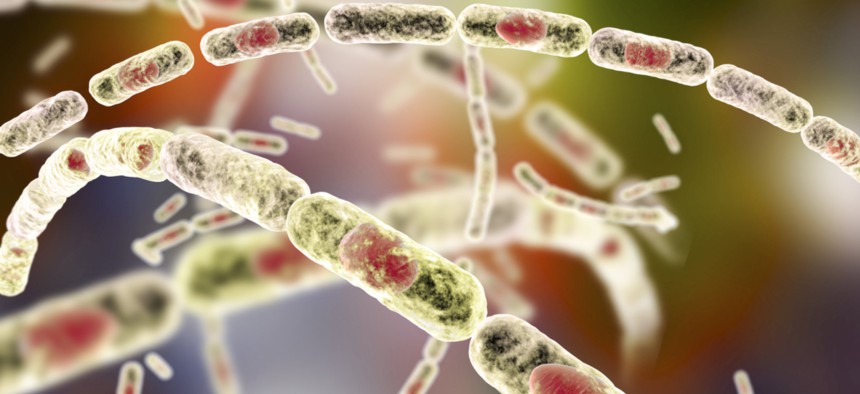DHS Wants to Stop the Next Anthrax Outbreak with Open Data

Kateryna Kon/Shutterstock.com
The Homeland Security Department is offering $300,000 for data solutions that can detect biothreats before they spread.
If someone unleashed a harmful pathogen in a crowded metropolitan subway system, local and national first responders would have just minutes to quash it before it proliferated.
But today’s biothreat surveillance systems might take too long and too often rely on medical data that belongs to health systems and patients, according to the Homeland Security Department.
That’s why DHS is launching a new challenge competition encouraging developers to come up with new ways to detect biothreats—potentially toxins like anthrax, used for bioterrorism and often contagious viral diseases like smallpox.
» Get the best federal technology news and ideas delivered right to your inbox. Sign up here.
The “Hidden Signals Challenge” promises $300,000 in prizes for successful detection systems. Five finalists are to be chosen in the first stage, receiving about $20,000 each, and a winning team in the second stage could win up to $200,000.
DHS is specifically looking for solutions that can detect biothreats within zero to 10 days of first exposure, and which pull in open data sets that update within 36 hours of first inputs.
The federal government has several existing biothreat monitoring systems, including DHS’s BioWatch, which conducts air sampling over 24-hour periods. The Centers for Disease Control developed an Early Aberration Reporting System, which churns through calls from emergency health departments, 9-1-1 calls, and information provided by doctors’ offices.
As state and local governments outfit their districts with high-tech sensors that constantly gather data on traffic patterns, electricity and water meters, and other human behavior, there are many new data sources developers can pull from to identify biothreats. “The wealth of open data generated by progressively ‘smarter’ cities and the trends” create an “unprecedented opportunity” to respond to these threats faster, according to DHS.
DHS is most interested in solutions that might work in cities including New York, Los Angeles, Chicago, Boston and Washington, D.C., but will consider solutions from any geographic area.
Judges include representatives from DHS, Columbia University, the Army’s Edgewood Chemical Biological Center, Chicago’s Office of Emergency Management, and the University of California in San Francisco.
Dec. 4 is the deadline for submissions.





